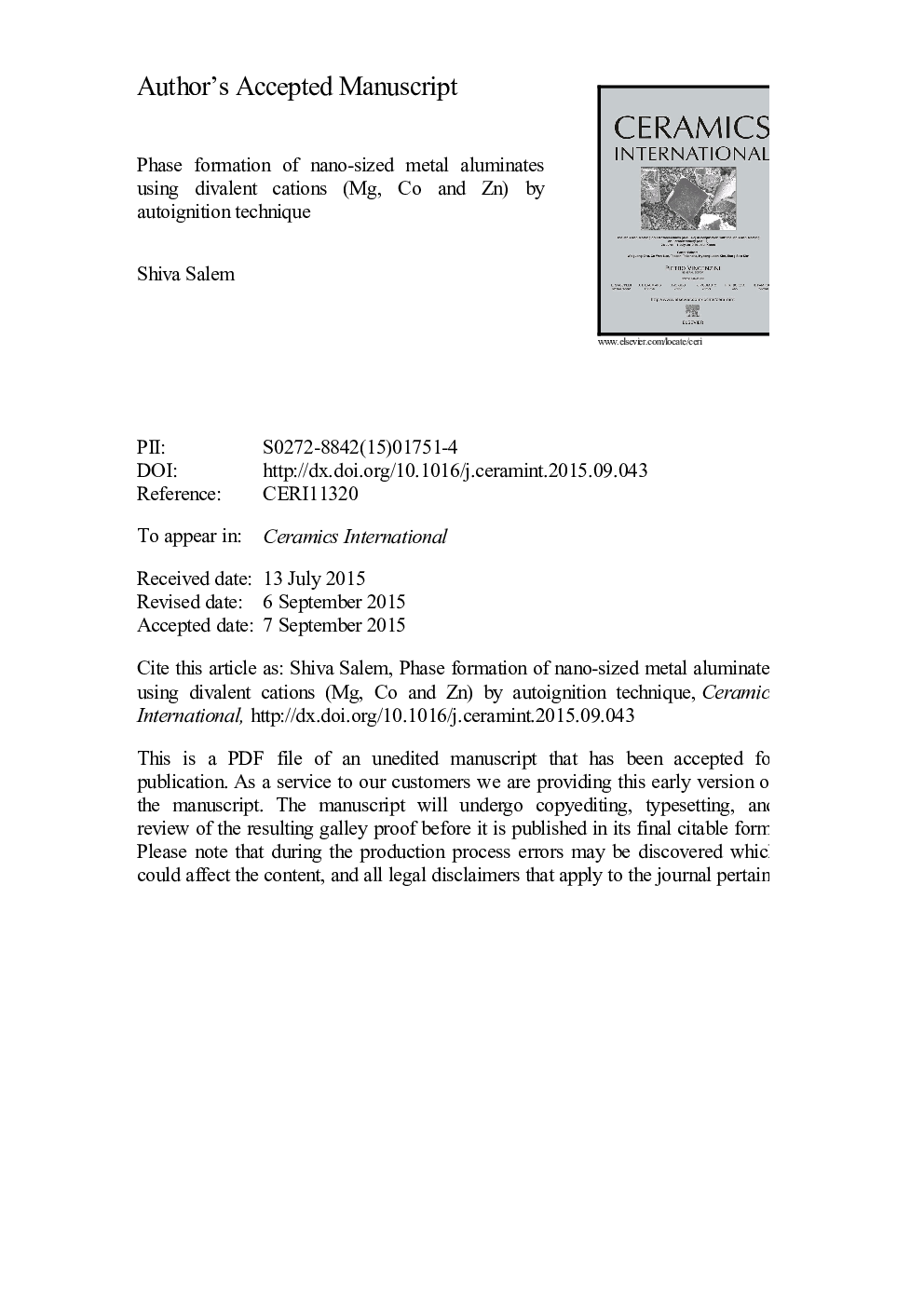| Article ID | Journal | Published Year | Pages | File Type |
|---|---|---|---|---|
| 10624443 | Ceramics International | 2016 | 39 Pages |
Abstract
The divalent metal aluminate spinels were synthesized by autoignition of gel systems containing metal (Al, Mg, Co and Zn) nitrates and glycine as a fuel. A mechanism for nanoparticle formation was proposed from dried gel autoignition to calcination. The simultaneous differential thermal and thermo-gravimetric analyses were applied to understand the nature of process. Independently, the polymeric matrixes exhibited typical self-propagating combustion behaviors at low temperatures, 220-275 °C. The heat treatment was carried out on as-formed foamy materials to achieve the well crystallized spinels in nano-scale. The calcined products were characterized by X-ray diffraction, Brunauer-Emmett-Teller surface area measurements and transmission electron microscopy. Based on the resultant powders, the purity, crystallite size and specific surface area of spinels are directly related to cation type. The crystallized particles, having diameters smaller than 20 nm, could be successfully synthesized through optimized process variables.
Related Topics
Physical Sciences and Engineering
Materials Science
Ceramics and Composites
Authors
Shiva Salem,
